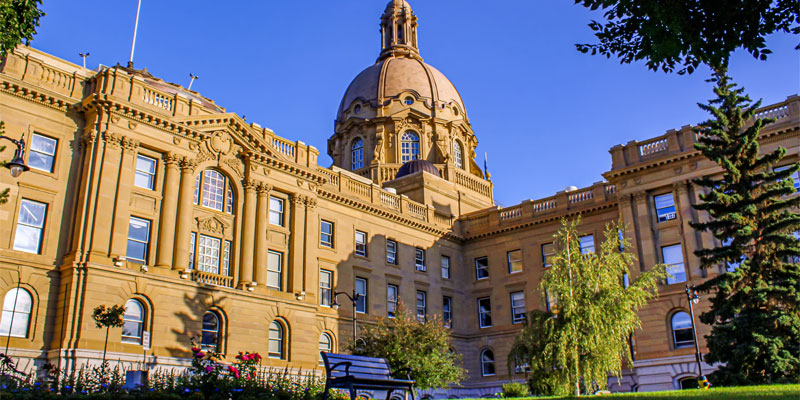Alberta’s bleak economic outlook will hasten the decline of provincial finances

Due to COVID-19, with many Albertans sheltering in place to avoid spreading the disease, the province’s economy is obviously taking a huge hit. And we also face a global oil glut, which made historic headlines this week, that seriously threatens the economic health of our most important industry and the fiscal health of the provincial government. While it will be a long time before we understand the full economic and fiscal impact, several recent projections paint a bleak picture.
For instance, the province lost 117,000 jobs in March alone—an unprecedented economic shock. And a recent report by RBC forecasted that Alberta would see a 5.6 per cent decline in GDP. That would be the largest decline of any province and the largest single year decline Alberta has ever seen. The Conference Board of Canada recently forecasted a similarly gloomy 5.8 per cent decline.
Among the most alarming projections were made by Premier Jason Kenney, who said the provincial budget deficit for this fiscal year could roughly triple to $20 billion, and that the unemployment rate could reach a startling 25 per cent.
If these forecasts come to pass, in addition to the hardship felt by Albertans and their families, they will do significant damage to the province’s government finances, which have badly eroded over the past decade, particularly given the province’s fiscal management since the Great Recession.
Going back to 2008/09, successive provincial governments have run deficits in all but one fiscal year, though good times and bad. While Albertans could proudly boast of having no net provincial government debt until a few years ago, by the end of the 2019/20 fiscal year the province is projected to have $35 billion in net financial debt. That’s a roughly $70 billion erosion of the province’s assets since 2007/08 (before the Great Recession) when the province’s financial assets (including the Heritage Fund) exceeded its liabilities.
While Alberta’s provincial government debt load remains smaller than every other province, adding $20 billion in a single year—while potentially delaying the path to budgetary balance—would quickly bring the province closer into line with other provinces. This would have some immediate consequences including an increase in the cost of financing the provincial government debt.
Consider this. The province’s annual government debt-servicing costs have increased from roughly $200 million annually in 2007/08 to just over $2 billion in 2019/20. The last provincial budget projected that the annual debt-servicing costs would increase to nearly $3 billion by 2022/23. (Crucially, the Kenney government tabled that budget before the extent of the global pandemic came into focus, and before the Russian and Saudi governments upended the global oil market.)
Many Albertans, like many other Canadians, are hurting. And clearly, the dual shock of COVID-19 and the global oil glut will have significant consequences for Alberta’s government finances. Due to a decade of rapid debt accumulation, Alberta’s books are badly damaged. This means that, on top of all the other economic damage, Alberta’s annual debt-servicing costs will increase, meaning that even when we are on the other side of these two crises, the government (i.e. taxpayers) will have large bills to pay.

